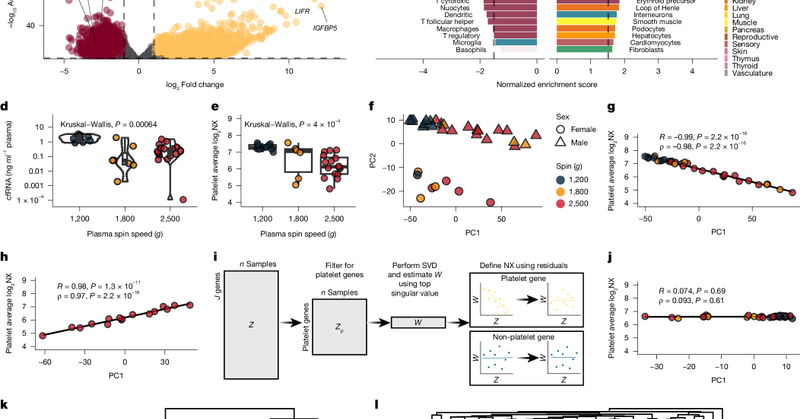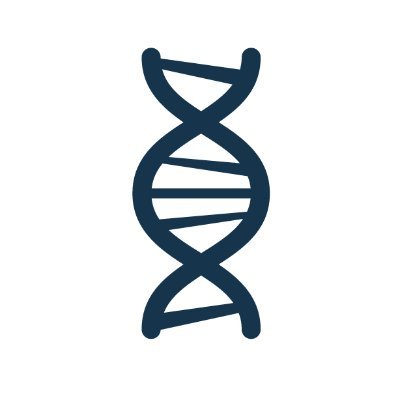
Max Diehn, MD/PhD
@max_diehn
Followers
2K
Following
681
Media
15
Statuses
181
Radiation oncologist & physician scientist @Stanford. Lung cancer, liquid biopsy, diagnostics
Stanford, CA
Joined April 2014
RT @AshAlizadeh: @majorajay For our friends and our colleagues, especially those in community oncology, if you had the proverbial gun to yo….
0
10
0
RT @everettmoding: Our study integrating ctDNA & radiomics to predict outcomes in NSCLC treated with CRT is online at @CD_AACR! A great col….
0
17
0
RT @Aiims1742: In @Nature from @StanfordMed by @max_diehn & @AshAlizadeh .An ultrasensitive method for detection of cell-free RNA. https://t….
nature.com
Nature - A method, RARE-seq, for sensitive detection of cell-free RNAs in blood is demonstrated to have diverse clinical applications including diagnosing and characterizing human cancers, and...
0
29
0
We are extremely grateful for the patients & their families for participating in our study. We also greatly appreciate the support of @NIH @NCI @SU2C @Ludwig_Cancer, TRDRP, Troper/Wojcicki Foundations & others, without which this work would not have been possible. 15/15.
0
0
7
In sum, we describe development of a sensitive liquid biopsy method for #cfRNA analysis that has wide ranging potential applications in both cancer and benign disease. We hope our work will help to advance precision medicine and lead to improved treatments for patients. 14/15.
1
0
9
Finally, we profiled #cfRNA following COVID-19 mRNA vaccination. Vaccine RNA and host signatures of immune activation were both detectable in plasma, highlighting the potential of cfRNA as a pharmacokinetic and pharmacodynamic biomarker for RNA therapeutics. 13/15
1
0
1
Exploring applications in non-malignant disease, we analyzed #cfRNA from patients with pulmonary conditions including COPD, COVID-19, and ARDS. Levels of normal lung cfRNA increased with severity of lung injury and were higher in active smokers than never/former smokers. 12/15
1
0
1
We also developed a method to genotype directly from #cfRNA, focusing on actionable variants in NSCLC. 8/15
1
1
1
Using customized bioinformatics, we detected lung cancer with 73% sensitivity at 95% specificity. Sensitivity increased with stage, and RNA levels correlated with #ctDNA VAFs. Strikingly, RARE-Seq detected lung cancer in more samples than tumor-naïve ctDNA analysis. 7/15
1
1
1
RAG-focused RARE-Seq was applied to plasma from over 360 individuals with cancer or non-malignant conditions and controls. Compared to healthy controls, genes known to be expressed in #LungCancer were highly enriched in the blood of lung cancer patients. 6/15
1
0
1
Many aspects of our approach are key to maximizing sensitivity. For example, we found that platelets are major confounders of #cfRNA analyses and developed an approach to computationally remove this unwanted variation, which increased assay sensitivity. 4/15
1
0
2
In this study, we describe end-to-end optimization of RARE-Seq, including:.-Blood collection and storage.-Extraction & quantification of #cfRNA.-Library preparation & sequencing.-Customized bioinformatics analysis methods.3/15
1
1
1
This work was led by @monica_n52010, @luca_bogdan, and Young-Jun Jeon and co-supervised by @AshAlizadeh. It was made possible by great collaborations between @StanfordCancer, @MGHCancerCenter, @sloan_kettering, and others. Many thanks to all involved! 2/15.
1
0
4
NCCN Guidelines for DLBCL now include ctDNA MRD testing. This is a major advance for patients and the liquid biopsy field. Congrats to the Foresight Diagnostics team for this significant achievement!.
Foresight is thrilled to share that #ctDNA #MRD testing is now included in @NCCN Guidelines for #DLBCL – a first for this indication. The guidelines now recommend ctDNA-MRD testing to evaluate PET-positive results at end of first-line DLBCL therapy.
0
2
39
RT @UTSW_RadOnc: Thank you to @max_diehn for an insightful talk today on liquid biopsies for cancer detection and characterization. Our med….
0
3
0













